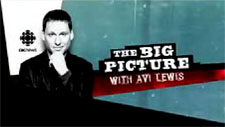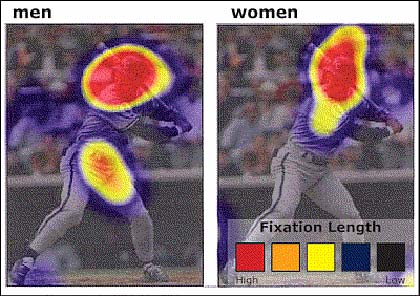Richard Dawkins takes a stab at why we’re here, using science and reason to back up his answer. It’s an interesting and inspiring perspective on an old question.
[The Big Questions – YouTube]
Richard Dawkins takes a stab at why we’re here, using science and reason to back up his answer. It’s an interesting and inspiring perspective on an old question.
[The Big Questions – YouTube]
The following is a clip from Cosmos, where the late Dr. Carl Sagan speaks about 4 billion years of evolution. In the background simple animations morph from one species to another illustrating the point.
Sagan on Evolution – YouTube]

I’ve talked about Richard Dawkins’ documentary The Root of all Evil before, but something I came across the other day which I found very interesting is The Big Picture: Debate on Dawkins’ Root of all Evil.
(Coincidentally my friend Shannon Phillips is one of the producers on Avi’s other show, On The Map.)
The interesting thing about the claim of a subliminal influence contained within popular music when played backwards is that the messages are very difficult (if not impossible) to discern unless you’ve been primed to hear them on a conscious level.
I’ve been receiving emails wanting to know how this apparent lack of influence ties in with research that demonstrates subliminal messages can coerce unwary buyers into making purchases they would not otherwise have considered?
A short story is in order, (stop me if you’ve heard this one) Fort Lee, N.J., 1957. Unsuspecting film goers are enjoying “Picnic”, with William Holden and Kim Novak. In the projection room, an important marketing experiment is being staged. Researcher James Vicary has installed a tachistoscope, a machine that can inject subliminal images of tiny fractions of a second—far below that of a person’s conscious threshold. Every five seconds and for a duration of just 1/3000th of a second, Vicary alternated two messages. One read, “Drink Coca-cola” and the other, “Hungry? Eat Popcorn”.
Vicary’s results were spectacular! Coca-cola sales jumped 18.1%; popcorn sales 57.8%. Vicary dubbed this “subliminal advertising”, the practise of manipulating consumers to make purchases they might not normally make.
And if you believe that, I’ve got a pet rock I’d like to sell you.
Advertisers and regulators doubted Vicary’s story from the beginning, so another researcher, Dr. Henry Link, duplicated Vicary’s experiment and found no evidence that people reacted to the messages. In a 1962 interview, Mr. Vicary admitted the data was all fabricated to gain attention for his business. Some critics have since expressed doubt that he ever conducted the experiments at all.
However, the legend lives on. To this day a great many people still believe Vicary’s claims and will apparently never be convinced otherwise.
As numerous studies over the last few decades have demonstrated, subliminal advertising doesn’t work; in fact, it never worked, and the whole premise was based on a lie from the very beginning.
According to a recent experiment, psychologists at Yale were able to alter people’s judgments by simply priming them with either hot or cold coffee.
The study participants, college students, had no idea that their social instincts were being deliberately manipulated. On the way to the laboratory, they had bumped into a laboratory assistant, who was holding textbooks, a clipboard, papers and a cup of hot or iced coffee and asked for a hand with the cup.
That was all it took: The students who held a cup of iced coffee rated a hypothetical person they later read about as being much colder, less social and more selfish than did their fellow students, who had momentarily held a cup of hot java.
As improbable as it may seem, findings like this one have continued to pour forth in psychological research in recent years.
New studies have found that people tidy up more thoroughly when there’s a faint tang of cleaning liquid in the air; they become more competitive if there’s a briefcase in sight, or more cooperative if they glimpse words like “dependable” and “support” all without being aware of the change, or what prompted it.
The article goes on to remind readers that, “studies of products promising subliminal improvement, for things like memory and self-esteem, found no effect”.
If you’re interested in this sort of thing, I recommend reading Malcolm Gladwell’s book, Blink—here’s a very short audio snippet from chapter 2 (650k mp3).
A recently released Gallup Poll indicates that more Americans accept theory of creationism than the science of evolution.
I have to ask myself, is it because those pesky scientists have been wrong about so many things or because religion has been so particularly good at teaching us about the way the world is?
The data from several recent Gallup studies suggest that Americans’ religious behavior is highly correlated with beliefs about evolution. Those who attend church frequently are much less likely to believe in evolution than are those who seldom or never attend.
I’d be interested if there is also a correlation between those that finish high school and those that trust the science behind the theory of evolution, and again between those that go on to University and if they believe in so called “intelligent design” or evolution.
The data indicate some seeming confusion on the part of Americans on this issue. About a quarter of Americans say they believe both in evolution’s explanation that humans evolved over millions of years and in the creationist explanation that humans were created as is about 10,000 years ago.
Quite frankly, no matter which side of the debate you take, you have to admit the data indicate that about a quarter of Americans are stupid.
This is about ten years old, but I just discovered it recently and think it applies pretty much perfectly to a conversation I had only a week ago. Yes, as hard as it is to believe, there are still people who refuse to accept evolution as “science”.
A Korean venture start-up claims to have developed an audio sequence that can communicate with addicted game players below the conscious level. The company wants game manufacturers to play the embedded subliminal messages when a young user has kept playing after a preset period of time.
From The Korea Times article:
“We incorporated messages into an acoustic sound wave telling gamers to stop playing. The messages are told 10,000 to 20,000 times per second,” Xtive President Yun Yun-hae said.
“Game users can’t recognize the sounds. But their subconscious is aware of them and the chances are high they will quit playing,” the 35-year-old Yun said. “Tests tell us the sounds work.”
Any scholarly evidence I’ve ever read up on has indicated that subliminal messages don’t work, but apparently marketing such messages is big business.
Xtive applied for a domestic patent for the phonogram and is looking to take advantage of the technology in other sectors.
“We can easily change the messages. In this sense, the potential for this technology is exponential,” Yun said.
Related to the post about eye-tracking for usability, you might be interested in eye tracking research that shows artists look at things differently.
Have you ever noticed how some websites are just easier to read than others? The New York Times comes to mind as a good example of a site that creates an enjoyable experience through its use of columns that are not too wide, tight writing, lots of white space, and jettisoning unnecessary imagery.
The Online Journalism Review recently ran an extremely interesting article about the science of good page layout. It explains how using eye tracking software, it is possible to create more efficient pages that help uses read pages faster and retain more information at the same time.

Among the different information that can be gleaned from eye tracking, I found the differences between the sexes eye moments to be the most interesting. (Though I will add, I’ve never found myself staring at other guy’s crotches — so that makes me wonder, is this for real?)

From the article:
Although both men and women look at the image of George Brett when directed to find out information about his sport and position, men tend to focus on private anatomy as well as the face. For the women, the face is the only place they viewed. Coyne adds that this difference doesn’t just occur with images of people. Men tend to fixate more on areas of private anatomy on animals as well, as evidenced when users were directed to browse the American Kennel Club site.
It would be interesting to delve a little deeper into this finding. If it is true, I imagine there may be some evolutionary reason for the differences.
(via Kottke)
On Saturday and Sunday we, the human population, had an opportunity to see the moon completed blotted out by Earth’s shadow in one of those rare events known as a Lunar eclipse. Personally I’ve always thought solar eclipses to be the more interesting variety and so I never even bothered looking for the moon over the weekend.
However, thanks to the power of modern computing, here is an animated version of the entire phenomena, for those like myself that want all the reward without any of the effort.

I have to admit, the orange glow that appears on the moon during the middle of the action is kind of cool.